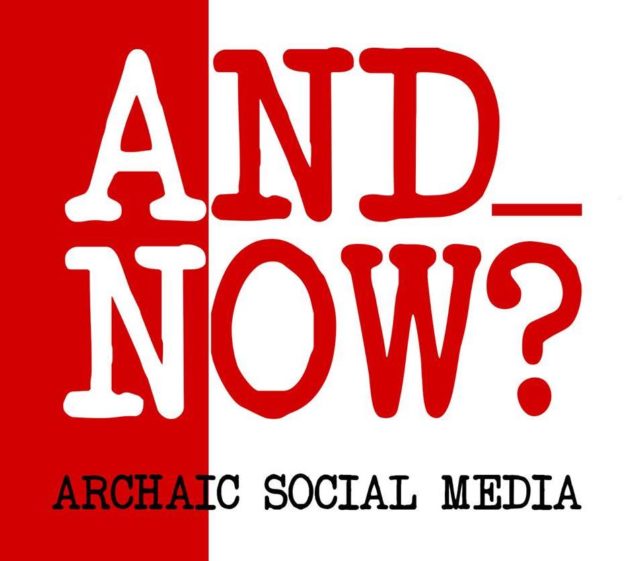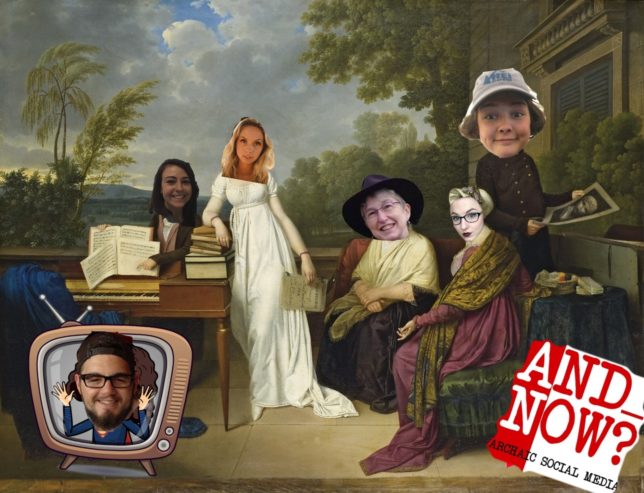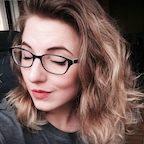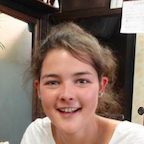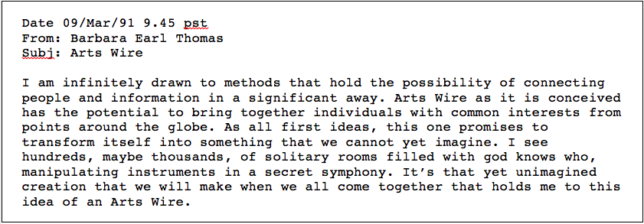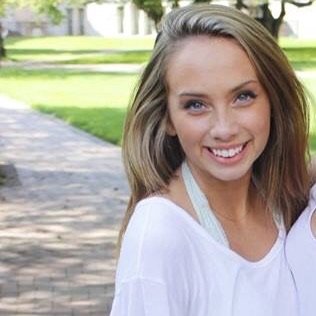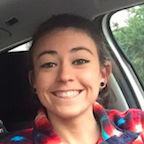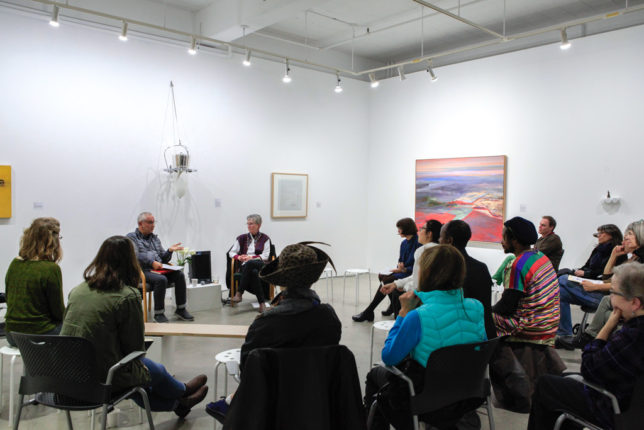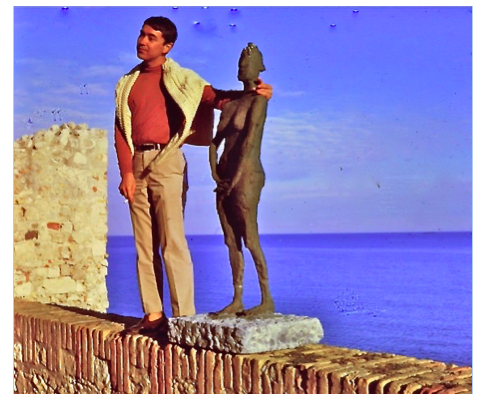Introduction – An often invisible layer
There is a dense layer of artistic activity all over the country that can be hard to see. At times it’s nearly invisible. With some exceptions, this creative activity lies close to the ground, found in many mostly small but dynamic nodes that are sometimes, but not reliably, linked together in informal, web-like ways. This story is about how a fairly isolated, regional chunk of this artistic layer began to make connections with other regions.
Many adjectives are used to describe the activity in this busy cultural arena: contemporary, experimental, noncommercial, artist-centered, independent, DIY, and grassroots. It’s also frequently referred to as responsive, diverse, focused on equity, and politically committed. Although it generally doesn’t get big flashy headlines, the workings of this domain are often well known by and intertwined closely with the communities where it lives. This creative layer shows up as storefront exhibition spaces, publications, residencies, digital platforms, project spaces, community centers, studios, and occasionally as high-profile institutions. It can be found in garage galleries and living rooms, tucked in buildings with unexpected neighbors, on paper in bookshelves and in piles at public events, in privately-run or governmentally-sponsored spaces, as well as in public places on an often temporary basis. Its inhabitants take many legal forms – as nonprofits, informal and unincorporated networks, collectives, associations, noncommercial for-profits, sometimes as artist support organizations, and, in ever-increasing numbers, as individual and independent organizers, often artists for whom this work is an extension of their art practice.
The key to all this activity is the central role taken by or given to artists, and, in fact, many endeavors that populate this realm are created by or run by artists. Often the organizational form itself is part of the work and includes efforts to bring together artists, art, various publics, communities, and organizations in ways that lead to all parts being integral to the whole. For simplicity’s sake, I’ll use the terms artist spaces, arts organizers, and artist-centered as stand-ins for the wide variety of forms this energy takes.
Back in the 1970s and ’80s when this arts layer wasn’t as thick as it is today, I helped create and run an early example of this activity in Seattle, an organization named and/or. Over its ten-year life and/or gained a national reputation that decades later, in 2015, led to my becoming a member of the founding board of Common Field, an organization that aims to connect and empower this nationwide, multi-various network, this “field.” Common Field’s largest program is an annual gathering of the network, the Common Field Convening. It welcomes artist spaces and arts organizers from anywhere in the country to attend. The most recent convening, held in Philadelphia this year, attracted over five hundred participants from 32 states.
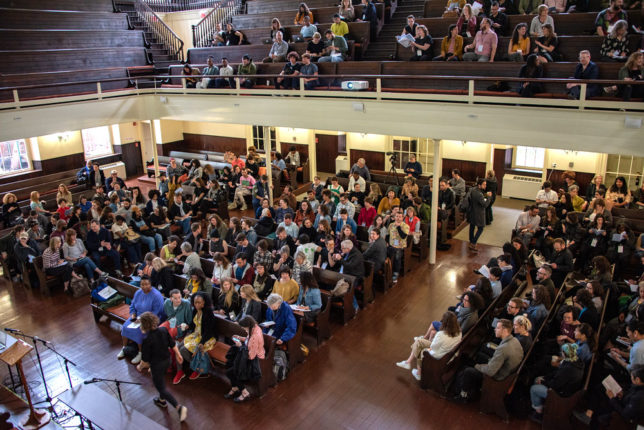
In Seattle and Washington State today, the world of artist-centered activity is just as dense as it is anywhere else, but until now it has had few connections with its counterparts elsewhere. It has felt like a far-off corner of the country. My direct experience in this world is decades old, and Seattle artist Matthew Offenbacher has been my main guide to what’s happening in our region now. Matt says of himself, “I seek constructive, positive positions at often difficult intersections of individuals, communities, and institutions.” His work ranges from painting, writing, and object making to exhibition making and community organizing.
Matt and I wrote the following story collaboratively in response to an invitation to tell the Common Field network how we began the process of building relationships with others across the country. The piece was posted on Common Field’s website.
Anne Focke
![]()
Did you wonder why there were so many people from Seattle and Washington State at the Convening in Philly?
In 2017, Courtney Fink, executive director of Common Field, visited Seattle for a community meet-up at the Jacob Lawrence Gallery. Fifty or so organizers came together in the gallery at the University of Washington’s art school to network, share ideas, and learn about Common Field. However, despite the good conversation and energy generated, the meeting didn’t result in many new members or Convening attendees. In fact, at the Convening in Los Angeles that fall there were just three of us. We three were very excited by our experience and thought: more people from Seattle must go!
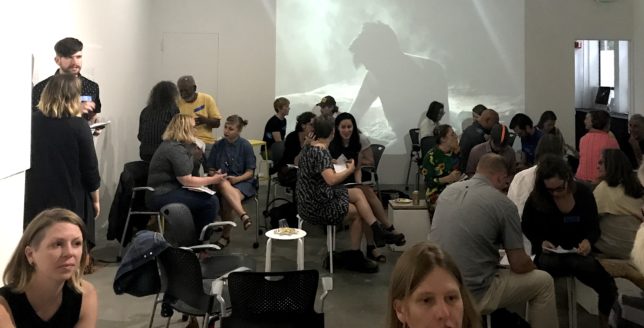
Our theory was that travel and time costs were the limiting factor. Like many places, visual art in Seattle relies heavily on grassroots and DIY organizations, often run by artists. This creates a landscape that is culturally rich and dynamic, but also incoherent and perpetually underfunded. High costs of living make it difficult for artist organizers to find time to write grant proposals, raise money, and work on administrative tasks. Also, there’s a pernicious civic attitude that emphasizes entrepreneurial competition over collective effort and mutual support.
To try to get more people to the 2019 Convening we hatched a plan to raise money to award ad-hoc travel scholarships. We asked for help from a group of four to five “strategizers.” These were people from organizations that might be supporting partners of the scholarship and who had fundraising and community organizing experience. Our strategizers encouraged us to think big, suggesting we raise money for three years of scholarships, with 10-20 recipients each year, and expand the range from just Seattle to encompass the entire state. After some back-of-the-envelope figuring, we decided scholarships in the amount of $1,000 each would cover travel, lodging, and expenses.
We made a lot of spreadsheets! There were lists of potential individual and institutional donors and lists of every artist-centered project and independent artist organizer we knew of and ones we didn’t but who were suggested by other people. We wrote information sheets explaining the project to donors. One effective argument came from a survey by one of our partner organizations, Artist Trust. They found that among Washington State artists, one of the highest self-identified needs is making connections outside the area. From the other direction, we learned from Common Field that artist spaces across the country don’t know what’s going on in Seattle and Washington.
Perhaps of less interest to our donors but important to our own sense of the project was trying to expand what is valued in our communities. We think a strong art community is one that values a robust network of artist-centered initiatives. This has seldom been the case. Directing donor resources to these initiatives – often marginal, temporary, peculiar, and community-specific – is an issue of artistic excellence as well as one of racial, cultural, and social class equity. We ended up thinking about how we could use Common Field, beginning with a travel scholarship program, both as a way to connect our locality to a national network and also as a focal point for local organizing that explores our common interests and collective power.
We began pitching possible donors and realized that while the project seemed to us like an obvious win-win for everyone, it was less clearly so to some donors. We hadn’t been clear enough in describing the double-win of local arts organizers meeting national peers and artist spaces elsewhere learning of the vitality of our region’s artist-centered work. We revised our pitches and kept at it. In the end, a private donor gave us funds for five scholarships, our county arts agency (4Culture) put in for another five, another private donor supported two, and four other donors supported one each. We had enough for 16!
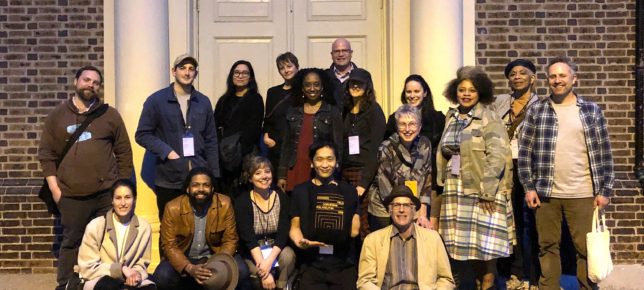
A three-person committee selected the recipients using our long list of organizations and organizers as the starting point. There was no application. Awardees first heard from us when we sent them a congratulations letter. In a field where crushing cycles of submission and rejection are the norm, receiving support in this way seemed to make people feel especially buoyantly “seen” and appreciated. At all points in our process, we tried to minimize time and aggravation for the awardees. There was minimal paperwork. We paid in advance. Some scholarships were awarded to individuals and some to groups, and we told the groups to use whatever process they liked to decide which individual(s) to send. There were no strings attached other than that they use the money to get themselves to Philly.
Here’s the list of awardees: Esther Ervin (Onyx), Kelly Froh (Short Run), Ben Gannon (cogean?), Bradly Gunn and Philippe Hyojung Kim (Soil), Benjamin Hunter (Community Arts Create), Elisheba Johnson (Wa Na Wari), Christopher Paul Jordan, mario lemafa, Don Linnertz (TwispWorks), Molly Mac and Kate Boyd (If You Don’t They Will), Monica Miller (Gallery One), Julie Chang Schulman (206 Zulu), Thea Quiray Tagle (The Alice), Asia Tail, Mary Welcome, Carol Rashawnna Williams (K-Love4Art)
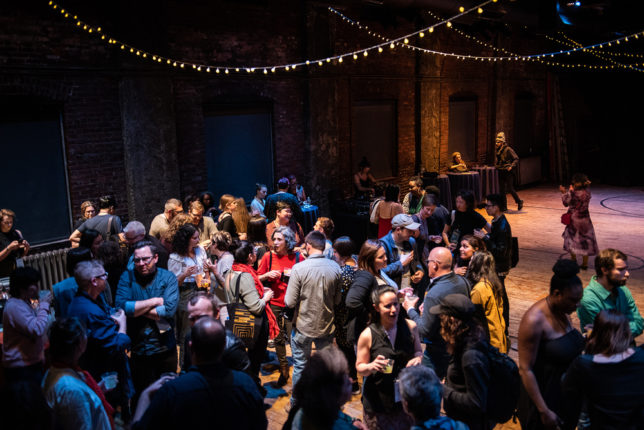
Two groups that were selected decided to split the money between two people in their group. So all in all, the scholarships supported 18 Washington State folks to go. The enthusiasm convinced even more folks to go: Charlie Rathbun (4Culture, King County’s arts agency), Rick Reyes (City of Seattle Office of Arts & Culture), Shannon Halberstadt (CEO Artist Trust), Sarah Faulk (curator), Margie Livingston (Soil), Mariella Luz (artist and member of Artist Trust’s board), and Emily Zimmerman (Jacob Lawrence Gallery). And of course the two of us were there, too. No wonder it seemed like Washington folks were everywhere at the Convening!
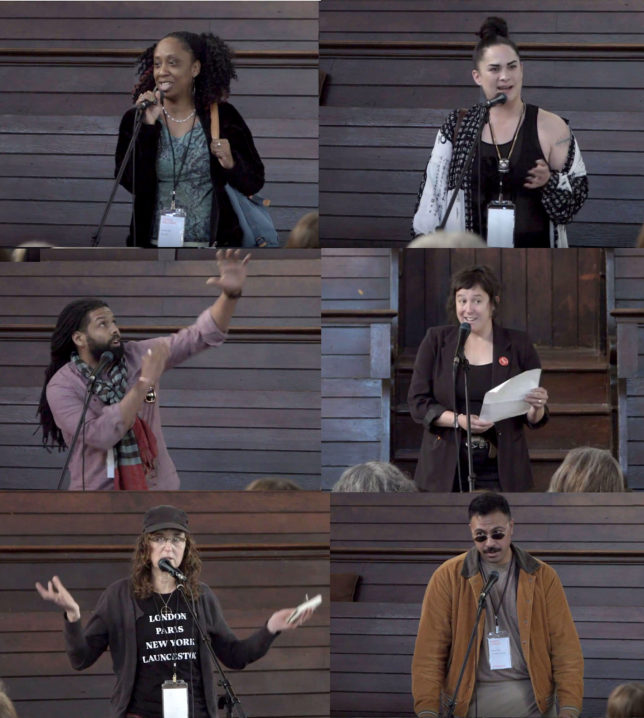
We’ve held two follow-up get-togethers since then: a small one in a home so that artist-organizers who got scholarships and donors who helped them to go could meet each other; and a second larger public one, a sort of mini-convening, where arts organizers could meet each other and discuss ideas that inspired the people who went to Philly. This meeting was sponsored by the Seattle Office of Arts & Cultureand held at their new facility above the downtown train station.
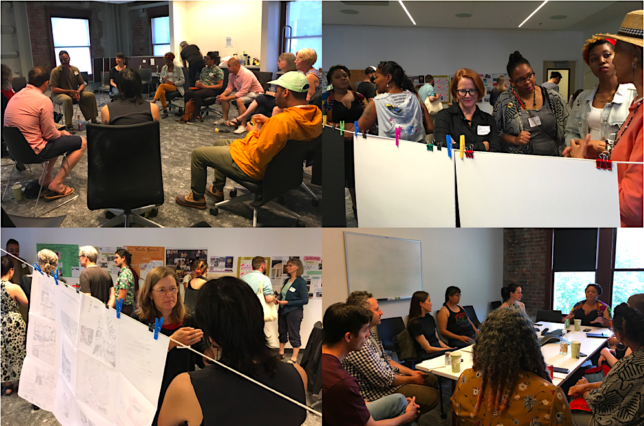
A huge team of people rallied with us to make the scholarship program possible: the donors to the scholarship program (4Culture, Edie Adams, Sarah Cavanaugh, Marge Levy, the Glen S. and Alison W. Milliman Foundation, Judy Tobin, and Merrill Wright); Artist Trust’s board who made the scholarships an Artist Trust program which meant the donations were tax-deductible; our “strategizers,” and finally, the invaluable Carole Fuller, our fellow-organizer and champion of the project who, in the end, couldn’t go to Philly.
We are now beginning to figure out how to raise the next round of scholarship money for Common Field’s 2020 convening in Houston, and our database of artist spaces and arts organizers in Washington just keeps growing. It now stands at 220. We invite you to check out the full list here and meet Washington State artist spaces and arts organizers!
![]()
Coda
Shortly after we returned from Philadelphia, we received a thank you email from Christopher Paul Jordan, a Tacoma artist who received one of the travel scholarships.
This weekend was unforgettable. Thank you for galvanizing us to connect with our peers across the country. I am moving forward believing in a level of possibility for arts organizing that I never imagined; particularly inspired by the work happening in Dallas Texas and in Puerto Rico, but also reminded how many unique resources and possibilities are rooted in our region. Reminded that anything is possible. Truly appreciate your support in helping open an new chapter of vision and relation.
The note from Chris affirmed the value of strengthening the web-like nature of connections within the fertile layer of artist-centered activity. In our case, the travel between Washington State and Philadelphia resulted in a three-way exchange: getting to know our peers in other parts of the country, allowing artist-centered spaces and organizers elsewhere to get to know us, and getting to know each other and our own resources better. It’s kind of a win-win-win for all of us.
![]()
Links
• Common Field
• Matthew Offenbacher
• List of artist organizers in Washington State, updated as of 10/8/19
• Christopher Paul Jordan
![]()
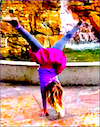 I was thrilled to find this letter from a friend as a comment on my piece, “Pollyanna?” Because online comments can easily get lost on a site like this, I moved it here with an OK from its author. I’ve also tagged it as part of my “Cartwheeling” series. The series is meant to be a place to share stories of places where I and others find hope in the face of the current state of the world. Many entries will be stories of extraordinary things that are already happening. My friend’s letter tells of his own quiet but extraordinary act, here in my own community. I’m grateful for it.
I was thrilled to find this letter from a friend as a comment on my piece, “Pollyanna?” Because online comments can easily get lost on a site like this, I moved it here with an OK from its author. I’ve also tagged it as part of my “Cartwheeling” series. The series is meant to be a place to share stories of places where I and others find hope in the face of the current state of the world. Many entries will be stories of extraordinary things that are already happening. My friend’s letter tells of his own quiet but extraordinary act, here in my own community. I’m grateful for it.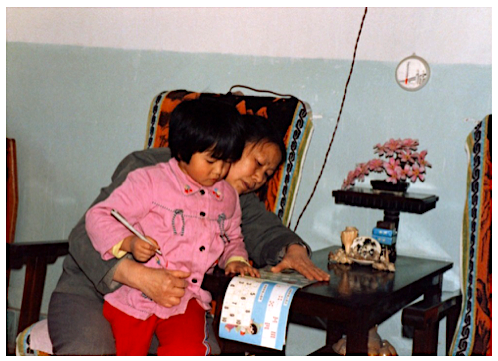
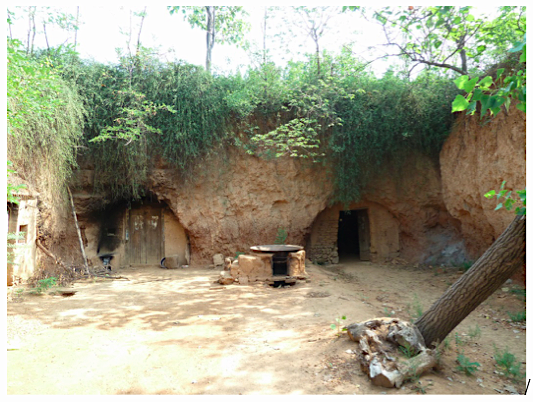
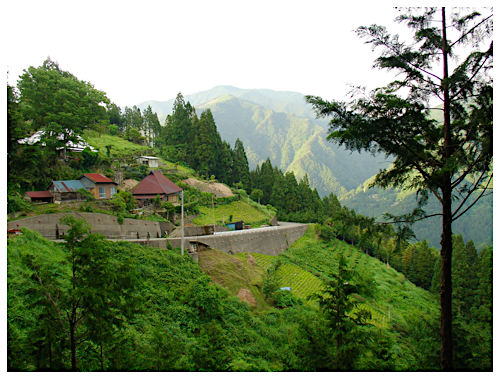
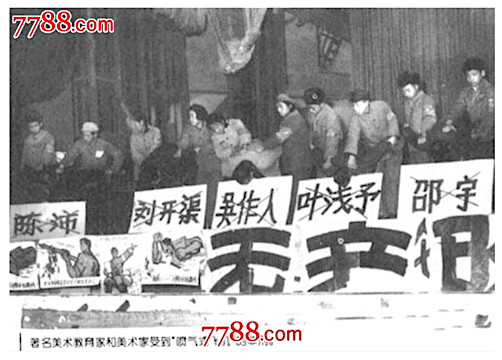
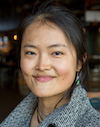 Boting Zhang works at The Bramble Project, “joyful and conscientious urban development.” Of her work she says, “I work to support collective wisdom and agency in the complex civic and social dynamics surrounding urban change and belonging. I offer ideas for how our polarized society can heal itself in a parallel essay, ‘
Boting Zhang works at The Bramble Project, “joyful and conscientious urban development.” Of her work she says, “I work to support collective wisdom and agency in the complex civic and social dynamics surrounding urban change and belonging. I offer ideas for how our polarized society can heal itself in a parallel essay, ‘